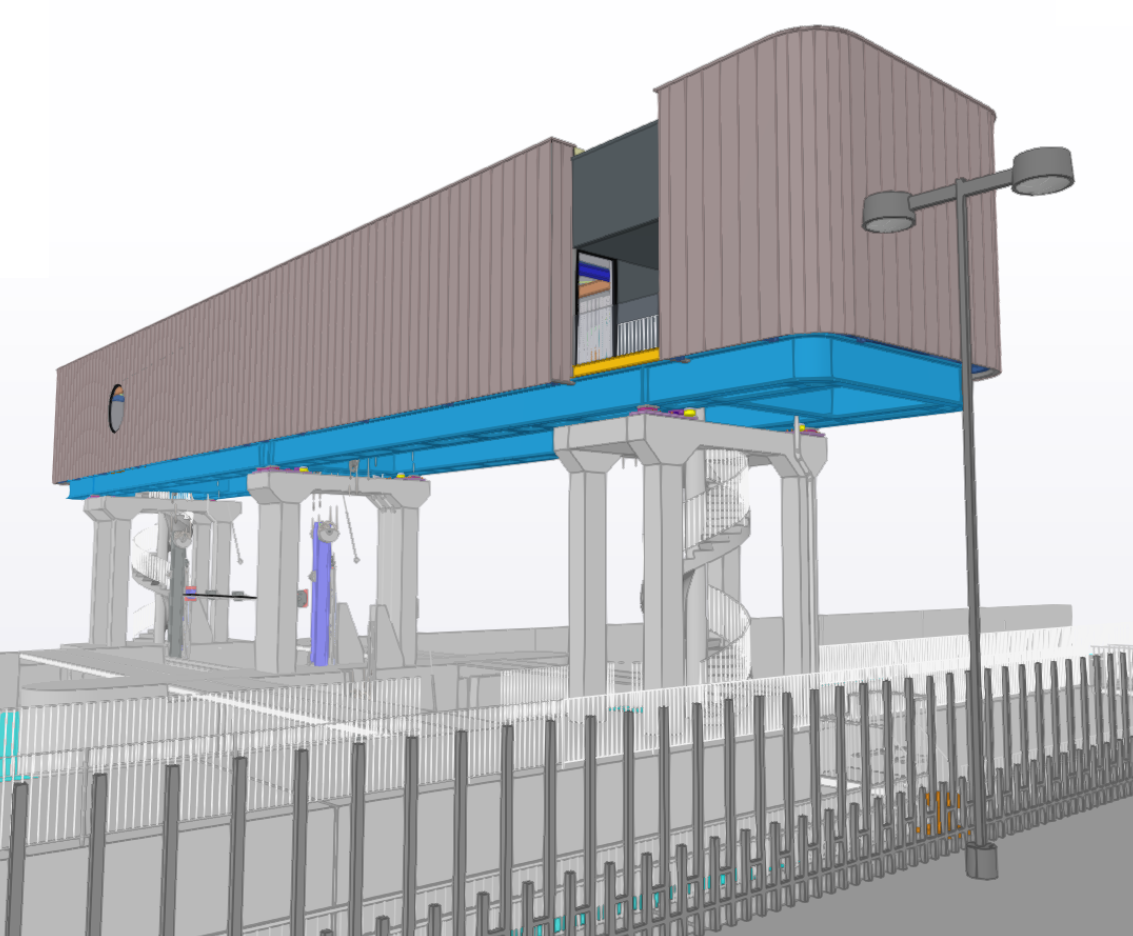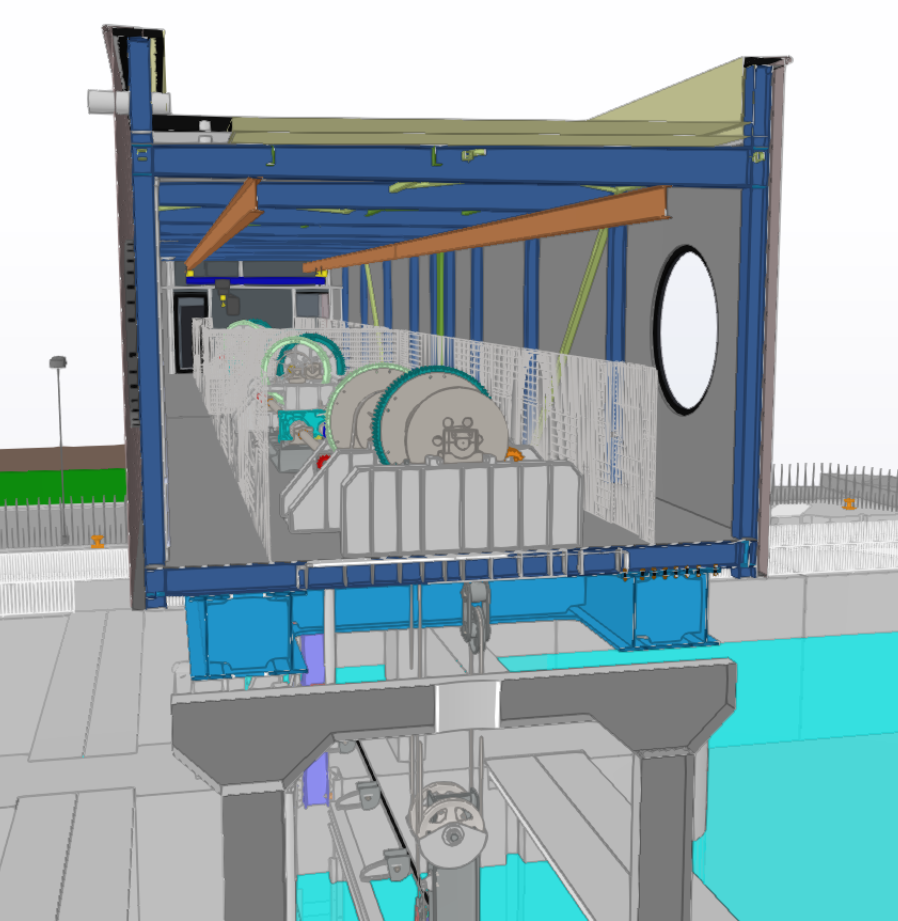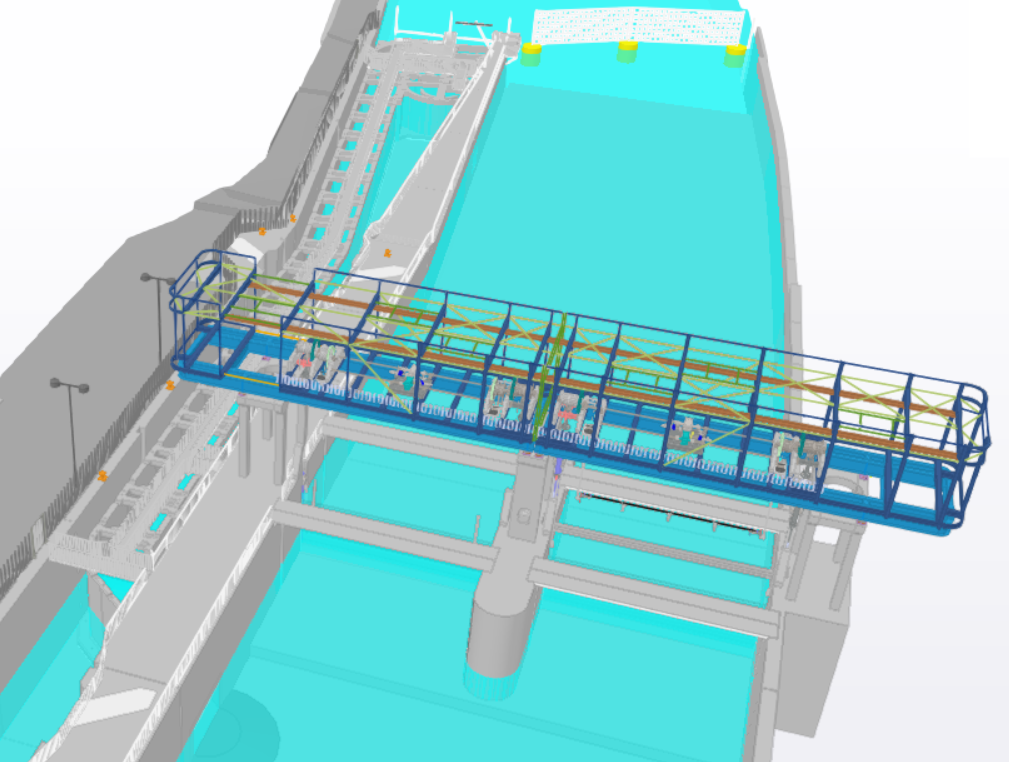This project is part of the Seine-Scheldt project, in which Belgium and France have joined forces to improve navigability between the Seine basin on the one hand and the Scheldt basin and North Sea ports on the other. For this reason, the Lys is being developed into a European main waterway for vessels up to CEMT class Vb, i.e. vessels with a loading capacity of up to 4,500 tonnes and a maximum of 3 layers of containers. In order to be able to accommodate this size of vessel, the construction of a new lock in Sint-Baafs-Vijve is necessary. At the same time, the opportunity will be taken to tackle the fish migration problem at the nearby weir.
Under the framework contract for the provision of technical and administrative assistance for infrastructure projects of De Vlaamse Waterweg, Western Region division, The Ports and Waterways division of Tractebel will start working on the fish passage at the old lock (class I) in Sint-Baafs-Vijve. During the works on the lock and weir complex, De Vlaamse Waterweg also plans a thorough renovation of the portal (structure and electromechanics) above the lift slides as well as the conservation of the steel structure of the lift slides and valve in the workhouse. Tractebel has been involved in both the design of the fish passage and the renovation of the weir building. More specifically, the teams involved are: Ports and Waterways, Buildings, Structural Engineering, Ports and Waterways Equipment.
Renovation of weir
A weir regulates the level of the water for water control. Dams drain or supply water and avoid flooding or drought. In this way, De Vlaamse Waterweg on the one hand protects the environment along the waterway and on the other hand guarantees the reliability of inland navigation. In dry periods the weirs will therefore be closed more often to retain water. In periods of heavy rainfall, the weirs will be open to drain the water.
The current weir in Sint-Baafs-Vijve is outdated and will be renovated. The electromechanical equipment of the weir will be completely renewed, but it will also be given a complete facelift. The portico of the weir will be completely renovated and given a contemporary look. The cladding of the new porch corresponds to the cladding of the new service building on the main waterway axis of the Lys (at the level of the new Lock), so that all the structures are transformed into an attractive whole.
Construction of a new fish passage
Fish are constantly moving through a waterway in search of food, spawning and breeding grounds, wintering areas or new habitats. Consequently, weirs are a major obstacle for fish. They form a physical obstacle and cause the water to flow too fast. Fish cannot simply swim past them. Parallel to the renovation of the weir, a new fish passage will be built in the old, class I lock (right next to the weir). The old lock will therefore no longer be used as a sluice, as a 'single vertical slot' construction will be built here, whereby the fish will zigzag through the passage to an upstream zone. An added flow will also be used, meaning that "extra" water is introduced through a parallel channel into the last part of the fish passage in order to enhance the lure flow for the fish. At the same time, this added flow ensures that the fish passage can continue to function during periods of drought. To protect both structures, a landing protection is constructed all the way up.
In order to tackle the challenges mentioned previously, the different disciplines within Tractebel had to cooperate intensively and exchange information. An excellent opportunity to align the aspects of existing condition, utilities, architecture, steel structure, concrete structure, electromechanics, safety, maintenance and sustainability.
The teams are now mainly following up on the contractor's implementation study. As of October 2021, they will be looking forward to the effective realization of this project planned for June 2023.
The design of this project was only possible thanks to multidisciplinary collaboration. During the design process, it was very important to find a way to exchange information efficiently, as everyone works within his domain in the most appropriate design package. The IFC file format proved to be the key, so that clash detection within the different structures was also feasible.
The Tractebel teams involved are proud to be part of such an impactful project that will bring transport efficiency and biodiversity together.







